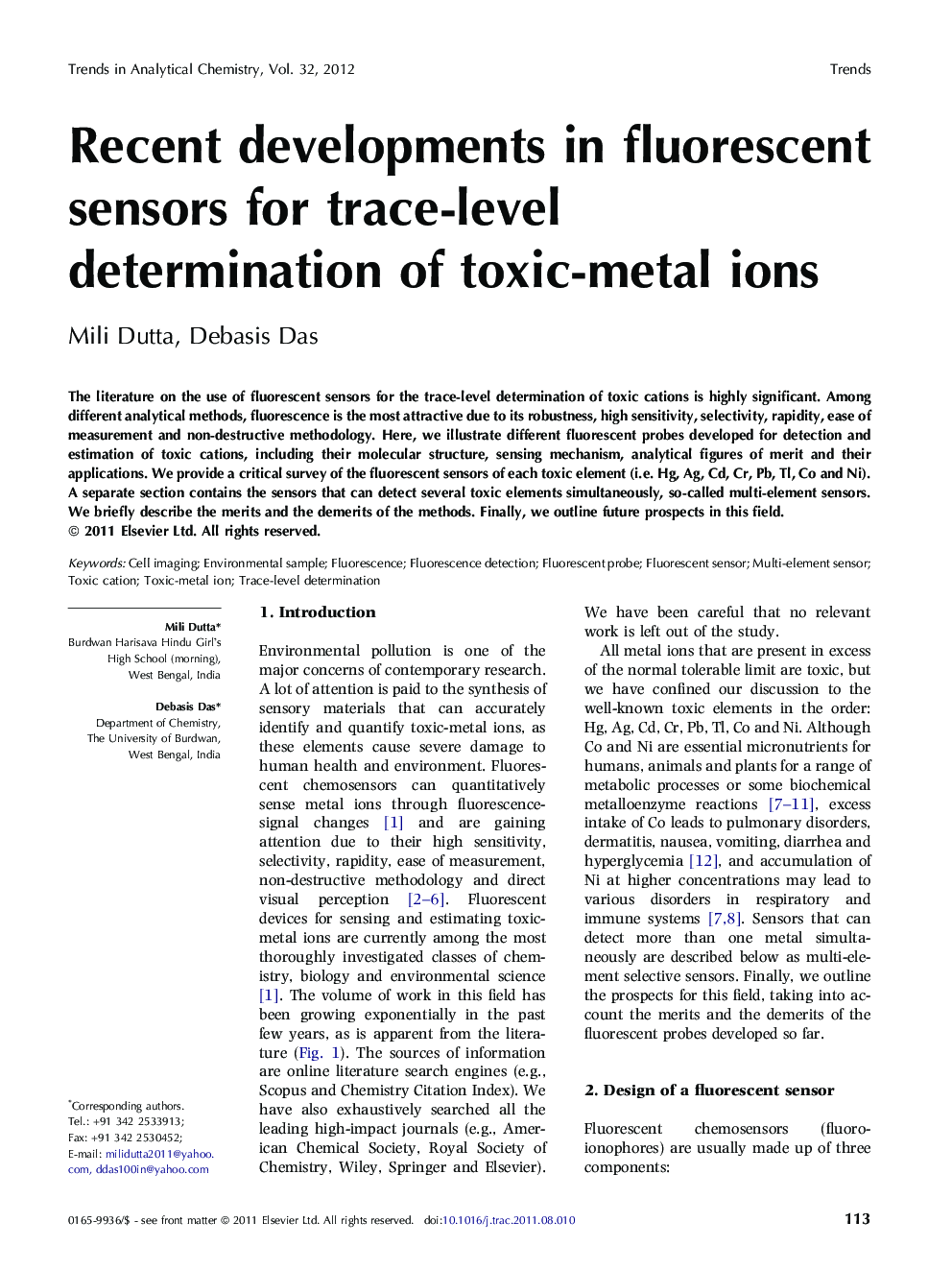| Article ID | Journal | Published Year | Pages | File Type |
|---|---|---|---|---|
| 1248267 | TrAC Trends in Analytical Chemistry | 2012 | 20 Pages |
The literature on the use of fluorescent sensors for the trace-level determination of toxic cations is highly significant. Among different analytical methods, fluorescence is the most attractive due to its robustness, high sensitivity, selectivity, rapidity, ease of measurement and non-destructive methodology. Here, we illustrate different fluorescent probes developed for detection and estimation of toxic cations, including their molecular structure, sensing mechanism, analytical figures of merit and their applications. We provide a critical survey of the fluorescent sensors of each toxic element (i.e. Hg, Ag, Cd, Cr, Pb, Tl, Co and Ni). A separate section contains the sensors that can detect several toxic elements simultaneously, so-called multi-element sensors. We briefly describe the merits and the demerits of the methods. Finally, we outline future prospects in this field.
► Different fluorescent sensors selective for toxic cations have been illustrated. ► Sensors selective for cations viz. Hg, Ag, Cd, Cr, Pb, Tl, Co and Ni discussed. ► Advantages and limitations of each fluorescent probe have been critically analysed. ► Analytical and biological applications of the sensors have been thoroughly reviewed. ► We have confined our discussion on the topic over the literature for last 10 years.
